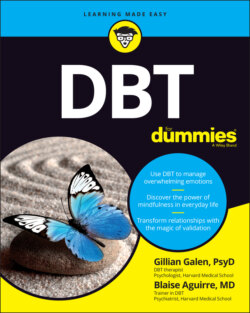Читать книгу DBT For Dummies - Gillian Galen - Страница 22
Beginning with the Biosocial Theory
ОглавлениеDr. Linehan recognized that certain conditions and disorders such as BPD were characterized primarily by emotion dysregulation — in other words, difficulty in regulating (through recognizing and then skillfully either tolerating or effectively dealing with the impact of powerful and at times painful) emotions. She stated that these difficulties emerged from the transaction between an individual’s biological and genetic makeup and specific environmental factors (a concept known as the biosocial theory). She noted that people with conditions like BPD had three prominent characteristics:
They tended to be very emotionally sensitive, which means that they tended to react very quickly and with more intensity than the average person to events that led to emotional experiences.
When emotions flared up, they had difficulty controlling them, and this in turn led to behavior that was dictated by their mood state; as a result, when a person with BPD was in a good mood, they could get almost anything done, and when they were in a bad mood, they had a difficult time meeting the expectations of the moment. This type of behavior based on mood is termed mood-dependent behavior.
When the person experienced these intense and heightened emotions, it took them longer than the average person to get back down to their emotional baseline.
The following sections discuss dysregulation and environmental factors in more detail.
